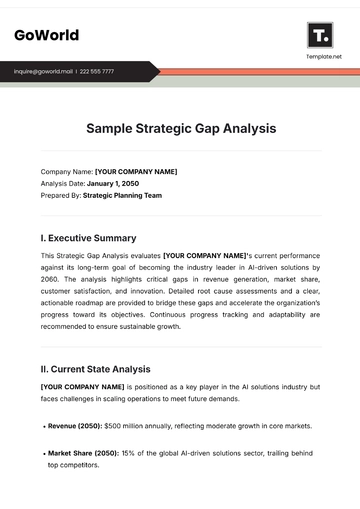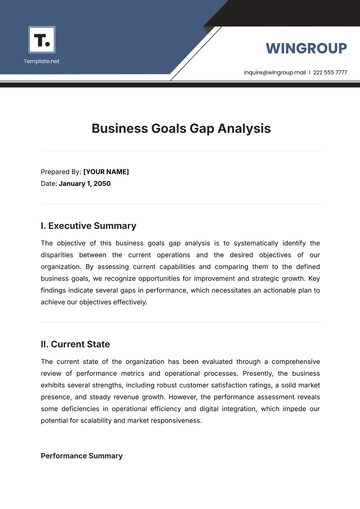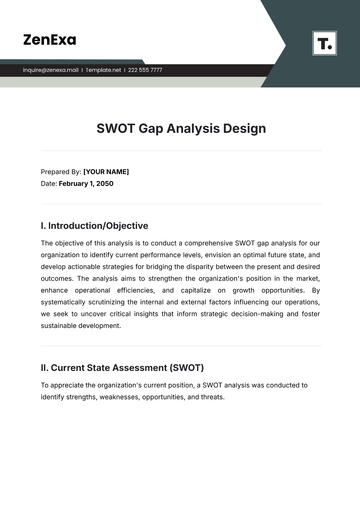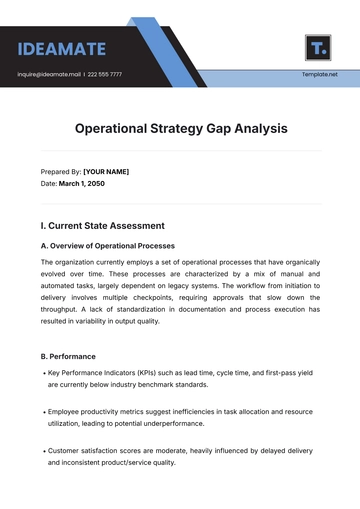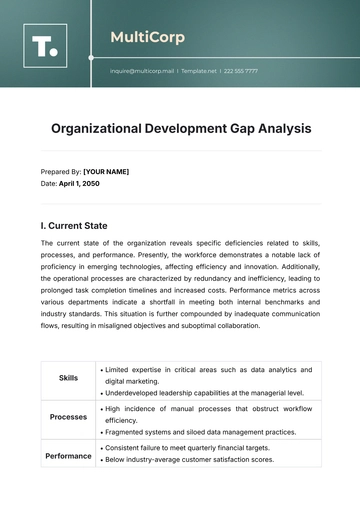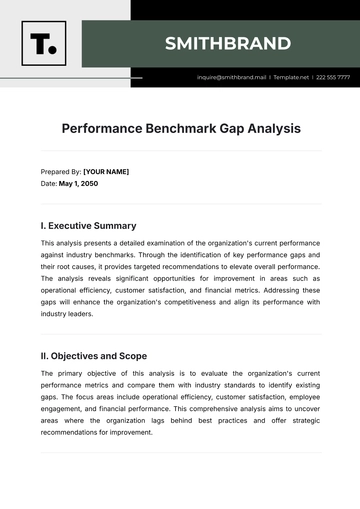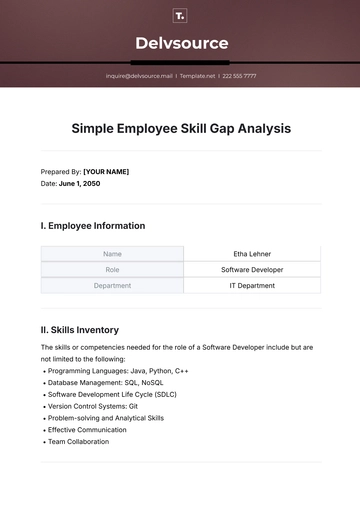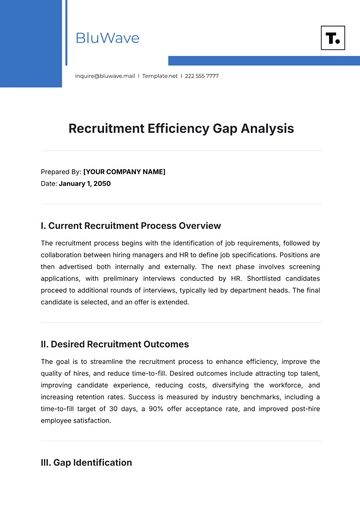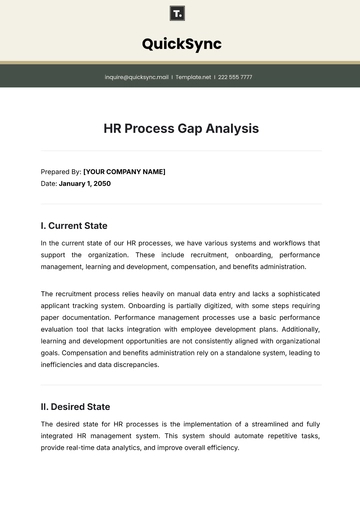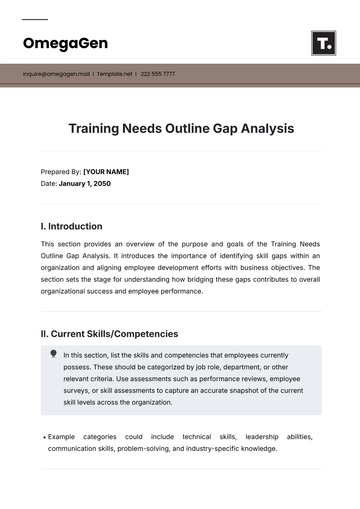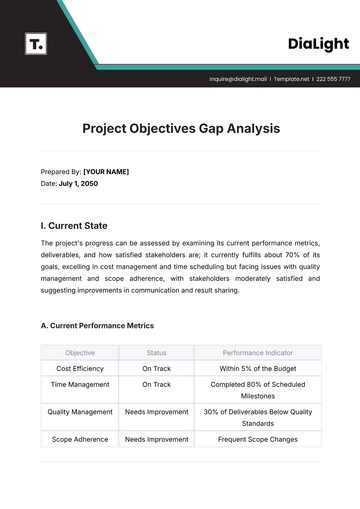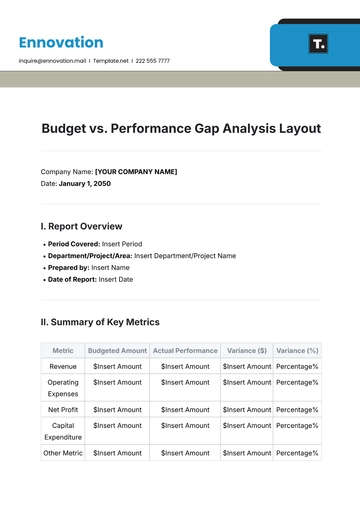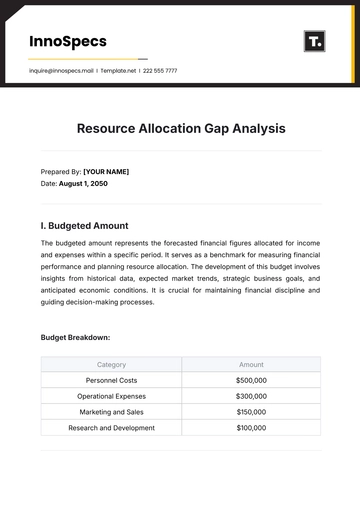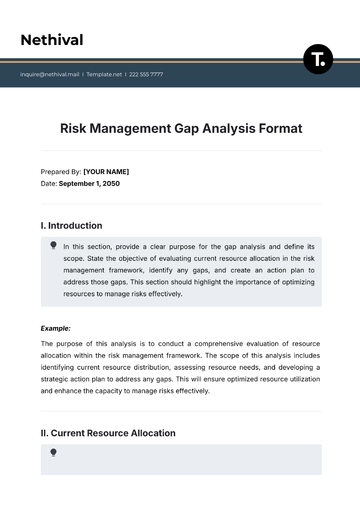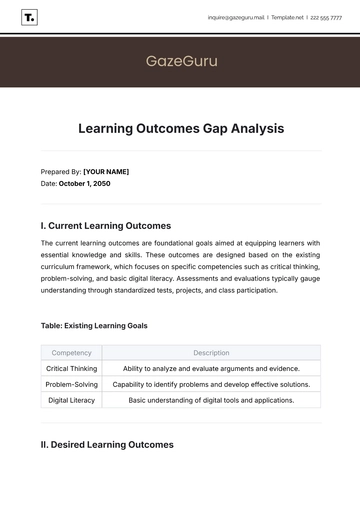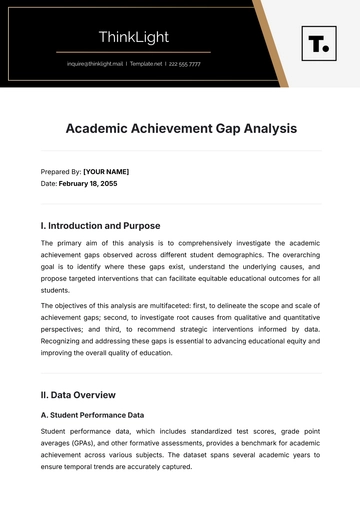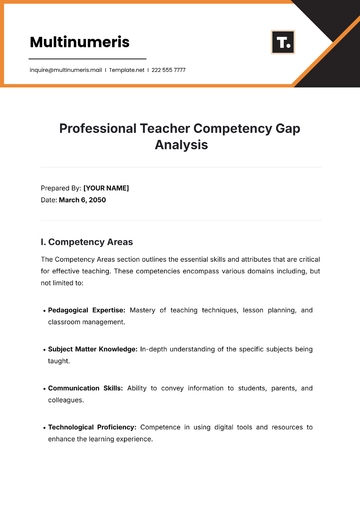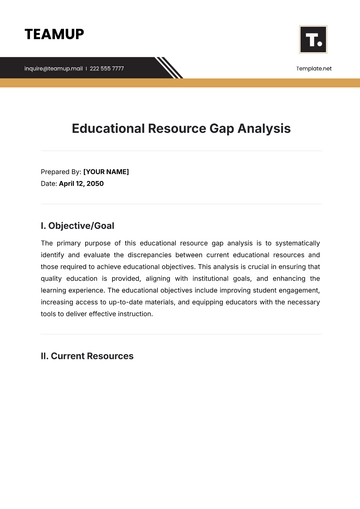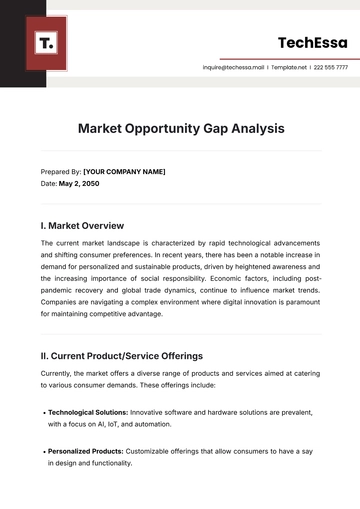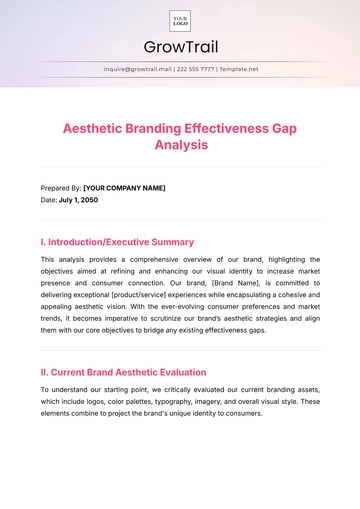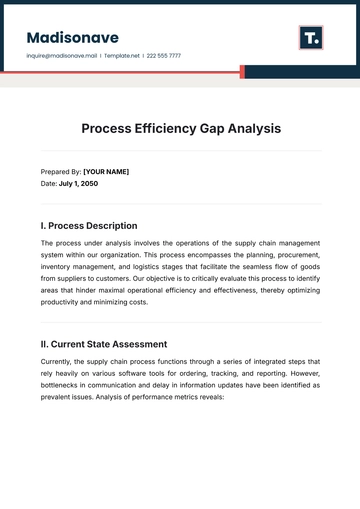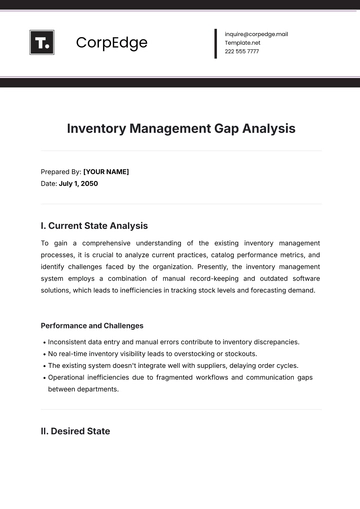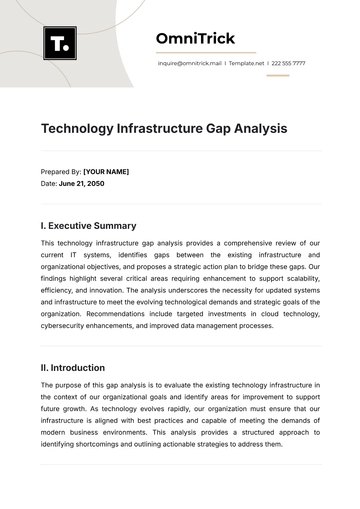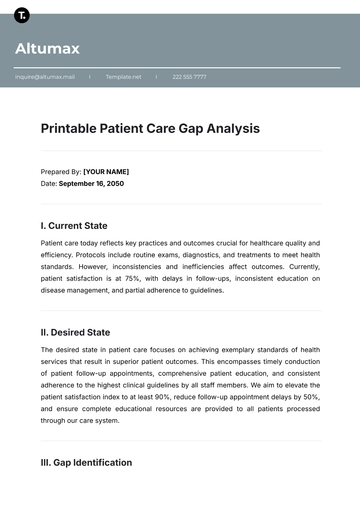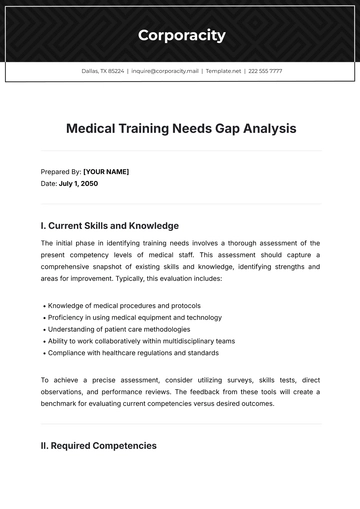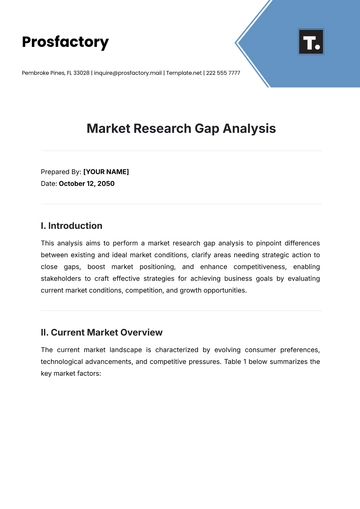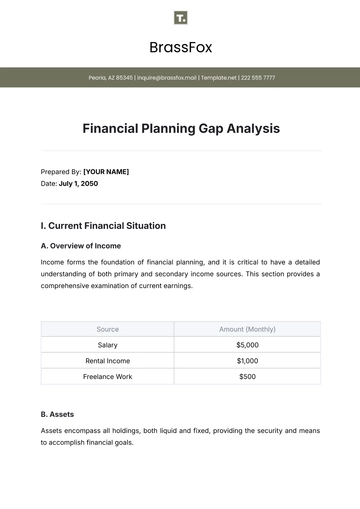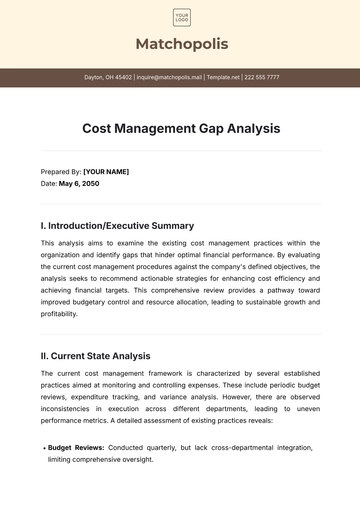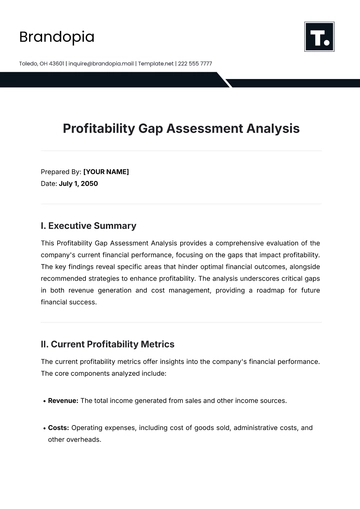Free Administration Strategic Meeting Outcome Analysis
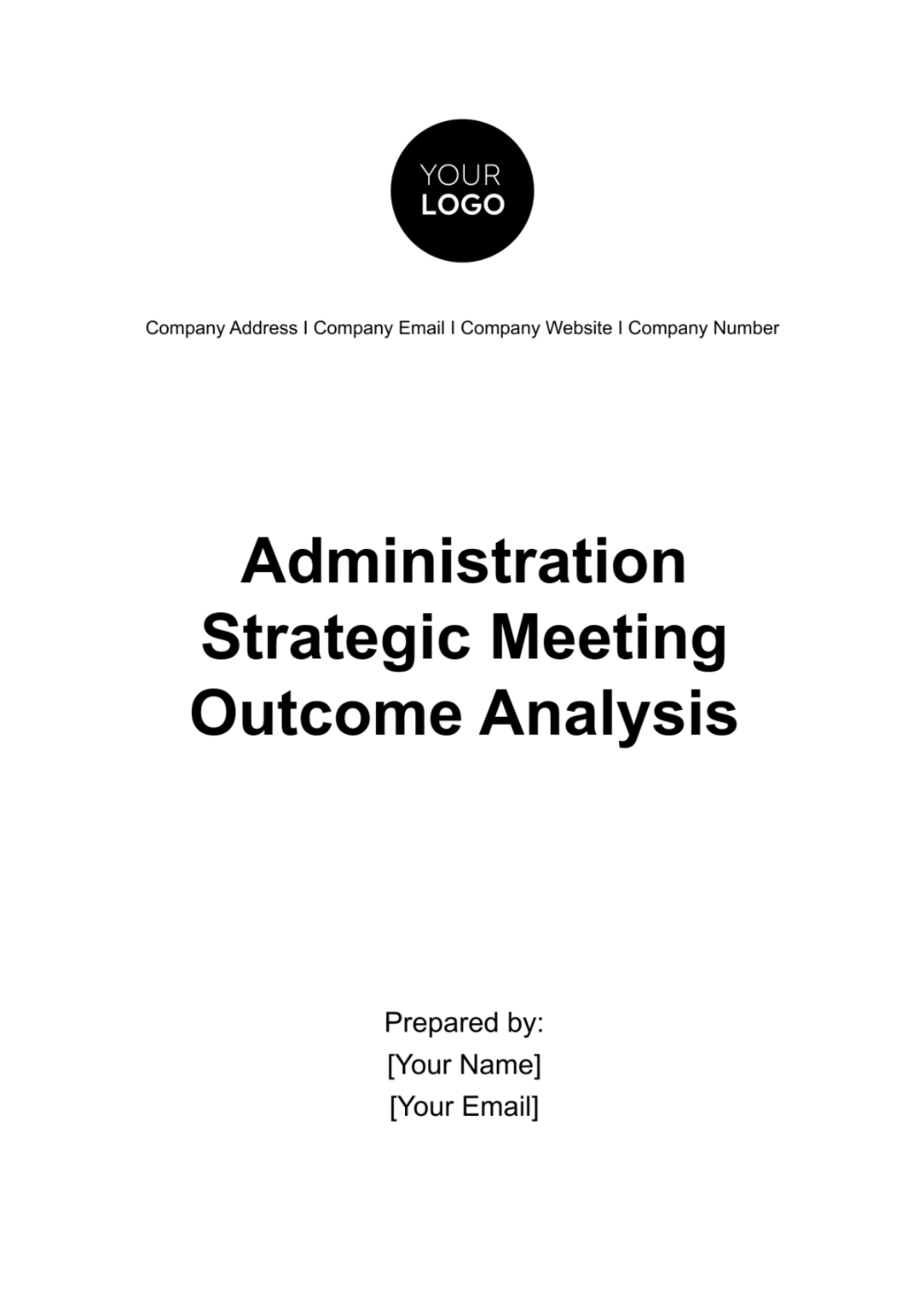
1. Introduction
1.1 Background Information
[Your Company Name] convened its annual strategic meeting on [Month, Day, Year], aiming to assess the past year's performance and set the course for the upcoming fiscal year. This meeting brought together senior management, key department heads, and selected stakeholders to collaboratively shape the strategic direction of the company. Amidst an evolving market landscape and emerging challenges, the meeting focused on innovation, growth strategies, and enhancing operational efficiency.
1.2 Objectives
The agenda for the day was ambitious, reflecting the company's aspirations not just to lead in its industry but to redefine it. The objectives set for the meeting were clear:
Reflecting on the Past: A thorough review of the previous year's strategies, dissecting both triumphs and setbacks, to distill lessons learned and inform future plans.
Charting the Future: Crafting a robust growth strategy that was not just reactive to market conditions but proactive in anticipating changes, seizing opportunities, and mitigating risks.
Operational Excellence: Delving into the operational gears of the company, identifying bottlenecks, inefficiencies, and areas ripe for innovation, with the aim of streamlining processes and elevating productivity.
Embracing Innovation: A commitment to embedding innovation at the core of the company's operations, from product development to customer engagement, recognizing that in a fast-evolving world, staying still was akin to moving backward.
Cultivating Culture: Recognizing that the company's greatest asset was its people, the meeting aimed to strategize on nurturing a culture that was not only conducive to achieving its business goals but also to fostering employee growth, satisfaction, and retention.
1.3 Participants
The meeting saw participation from a diverse group of key stakeholders, including:
Stakeholders | Details |
|---|---|
CEO, [Your Company Name] | Presided over the meeting, setting the tone for strategic discussions. |
Chief Financial Officer (CFO) | Provided financial oversight and insights into budget allocation and fiscal planning. |
Chief Operations Officer (COO) | Discussed operational challenges and efficiency strategies. |
Chief Technology Officer (CTO) | Led discussions on digital transformation and technological integration. |
Head of Human Resources | Addressed strategies for employee engagement, culture, and talent management. |
Department Heads (Sales, Marketing, Product Development, etc.) | Offered insights into department-specific strategies and performance. |
2. Meeting Overview
The strategic meeting unfolded over the course of a day, segmented into meticulously planned sessions designed to maximize productivity and foster in-depth discussions. The atmosphere was one of focused intensity, with each session building upon the last that would guide [Your Company Name] into the future.
2.1 Agenda Review
The agenda was a blueprint for the day, crafted to ensure that every minute spent in the meeting room was a minute spent moving towards clarity and consensus on the company’s strategic direction. It was divided into five key areas:
Performance Review of Previous Year: This session was dedicated to looking back before moving forward. The company's leadership reviewed financial reports, operational metrics, and strategic initiatives from the past year. This wasn't about dwelling on the past but about understanding it, learning from it, and using those lessons to inform future strategies.
Strategic Planning for Growth: Here, the focus shifted to the horizon, exploring avenues for growth. Market expansion, product innovation, and diversification strategies were dissected, with an emphasis on aligning these with the company’s core competencies and values.
Operational Efficiency and Process Improvement: Operational bottlenecks were laid bare in this session, with a collaborative problem-solving approach to streamlining processes, enhancing productivity, and reducing waste. This was about making [Your Company Name] not just a bigger company, but a smarter, more agile one.
Digital Transformation and Innovation: In a world where technology evolves at breakneck speed, this session was dedicated to exploring how [Your Company Name] could not just keep up but lead. From adopting new software solutions to exploring AI and machine learning, the discussion was future-focused and ambitious.
Culture and Employee Engagement: Recognizing that the company’s success was built on the strength of its team, this session focused on strategies to ensure that [Your Company Name] remained a place where talent thrived, creativity was nurtured, and hard work was recognized and rewarded.
2.2 Key Presentations
The day was punctuated by several key presentations that provided data, insights, and inspiration for the discussions:
Presentations | Details |
|---|---|
Annual Performance Report | Delivered by the CFO, this presentation provided a comprehensive look at the company's financial health, highlighting areas of strength and concern. |
Market Analysis and Growth Opportunities | The Head of Market Research presented a detailed analysis of market trends, competitive landscape, and untapped opportunities, setting the stage for discussions on strategic expansion. |
Digital Transformation Initiatives | The CTO unveiled proposed technological initiatives, from upgrading internal systems to launching customer-facing platforms, sparking discussions on how technology could be a game-changer for [Your Company Name]. |
2.3 Discussion Highlights
The discussions that unfolded were rich, diverse, and sometimes heated, reflecting the passion and commitment of everyone in the room. Key highlights included:
A consensus on the need for a more aggressive approach to market expansion, with several untapped regions identified as potential targets.
Acknowledgment of operational challenges, particularly in supply chain management, and a commitment to adopting lean management principles to address these.
A debate on the balance between investing in new technologies and optimizing existing platforms, with a final consensus on pursuing a dual-path strategy to ensure both innovation and stability.
3. Strategic Decisions Made
The culmination of the day’s discussions was a series of strategic decisions that would shape the company’s path forward:
3.1 Decision Summary
Decisions | Details |
|---|---|
Market Expansion | The company committed to entering two new international markets by the end of [Year], with a dedicated task force assigned to conduct feasibility studies and develop entry strategies. |
Product Innovation | An allocation of [Percentage] of the annual budget to R&D was approved, with the aim of launching a new product line by Q2 [Year]. |
Operational Efficiency | A company-wide initiative to implement process automation was launched, targeting a [Percentage] reduction in operational costs within 18 months. |
Digital Transformation | The green light was given for the development of a digital customer engagement platform, with a rollout planned for the end of Q2 [Year]. |
3.2 Impact Analysis
The decisions taken were not just strategic moves but investments in the future of [Your Company Name], with each expected to deliver significant returns:
Market Expansion: Projected to increase company revenue by [Percentage] within the first year of operation in the new markets.
Product Innovation: Anticipated to not only diversify the product portfolio but also to tap into new customer segments, aiming for a [Percentage] increase in sales.
Operational Efficiency: Expected to enhance profitability by streamlining operations and reducing waste, thereby improving the bottom line.
Digital Transformation: Aimed at boosting customer engagement and satisfaction, projected to drive a [Percentage] increase in sales through enhanced service delivery and customer experience.
4. Implementation Plan
The strategic decisions made during the meeting necessitated a robust implementation plan, outlining the steps, timelines, and responsibilities to ensure the successful execution of the strategies laid out.
4.1 Action Items and Timelines
A detailed action plan was developed for each strategic decision, with clear milestones and deadlines.
Action Item | Timeline |
|---|---|
Market Expansion | Formation of a task force by Q2 [Year], market analysis completion by Q3 [Year], and entry strategy finalization by Q4 [Year]. |
Product Innovation | R&D phase initiation by Q2 [Year], prototype development by Q4 [Year], and product launch by Q2 [Year]. |
Operational Efficiency | Audit of current processes by Q2 [Year], implementation of automation tools by Q4 [Year], and achievement of targeted cost reduction by Q4 [Year]. |
Digital Transformation | Design phase to begin by Q3 [Year], development phase by Q4 [Year], and platform launch by Q2 [Year]. |
4.2 Resource Allocation
Resources, including budget, personnel, and technology, were allocated to support the implementation of the strategic decisions. For example, the product innovation initiative was allocated a budget of $[Amount], with a dedicated team of 20 full-time employees.
4.3 Responsibilities and Accountability
Clear lines of responsibility and accountability were established, with department heads and project managers assigned to lead each strategic initiative. Regular progress reviews were scheduled to ensure accountability and to keep the initiatives on track.
5. Monitoring and Evaluation Framework
To measure the success of the strategic initiatives and ensure they were delivering the desired outcomes, a comprehensive monitoring and evaluation (M&E) framework was established.
5.1 Key Performance Indicators (KPIs)
Specific, measurable KPIs were defined for each strategic decision. For the market expansion initiative, KPIs included market share growth, revenue generated from new markets, and customer acquisition rates in the target regions.
5.2 Reporting and Review Schedule
A schedule for reporting on the progress of each initiative was established, with quarterly reviews to assess progress against the KPIs. These reviews would involve analyzing performance data, identifying any deviations from the plan, and making adjustments as necessary.
5.3 Feedback Mechanism
A feedback mechanism was put in place to capture insights from employees involved in the implementation of the strategies. This feedback would be invaluable for identifying challenges, improving processes, and ensuring the initiatives were effectively aligned with the company's goals.
6. Challenges and Mitigation Strategies
While the strategic meeting was marked by optimism, there was also a recognition of the challenges that lay ahead. A proactive approach was taken to identify potential challenges and develop mitigation strategies.
6.1 Market Expansion Risks
Risks identified included regulatory hurdles, cultural differences, and competitive pressures in new markets. Mitigation strategies included conducting thorough market research, engaging local partners, and developing region-specific marketing strategies.
6.2 Innovation and Technology Adoption Challenges
The risks associated with R&D and technology adoption included project overruns, technology integration issues, and the potential for not meeting customer expectations. Mitigation strategies involved establishing strong project management practices, conducting pilot tests, and gathering customer feedback early in the development process.
6.3 Operational Efficiency Obstacles
Potential obstacles included resistance to change, process disruption, and unanticipated costs. Strategies to overcome these included change management programs, employee training, and phased implementation of changes.
7. Future Projections and Strategies
Looking beyond the immediate strategic plan, the meeting concluded with a forward-looking discussion on the long-term vision for [Your Company Name].
7.1 Sustaining Growth
The company committed to continuous innovation and market analysis to sustain growth. This included investing in emerging technologies and exploring new business models to stay ahead of industry trends.
7.2 Building Resilience
Recognizing the volatile nature of the global market, strategies were developed to build resilience into the company’s operations. This included diversifying revenue streams, building a robust supply chain, and maintaining a strong financial position to weather economic downturns.
7.3 Long-term Investment in People and Culture
The company reaffirmed its commitment to investing in its people and nurturing a culture of innovation, inclusivity, and accountability. This was recognized as foundational to achieving long-term success, with plans for ongoing training, career development opportunities, and initiatives to enhance employee engagement and satisfaction.
8. Conclusion
In conclusion, the Administration Strategic Meeting for [Your Company Name] was a significant milestone in the company's journey towards sustained growth and innovation. Through a comprehensive and collaborative approach, the leadership team successfully outlined a clear strategic direction that addresses current challenges while paving the way for future opportunities. The detailed discussions and decisions made during the meeting reflected a deep understanding of the market dynamics, operational efficiencies, technological advancements, and the importance of a vibrant company culture.
The implementation plan developed is both ambitious and pragmatic, balancing the drive for growth with the realities of operational execution. It sets a roadmap for the company to not only achieve its short-term goals but also to lay the groundwork for long-term success. The monitoring and evaluation framework ensures that the company remains agile, able to respond to challenges and adjust strategies as necessary. This adaptability is crucial in a business environment that is constantly evolving.
The proactive identification of potential challenges and the development of corresponding mitigation strategies demonstrate a forward-thinking approach that will enable [Your Company Name] to navigate the uncertainties of business with confidence. Moreover, the emphasis on future projections and strategies highlights the company's commitment to not just react to the present but to actively shape its future.
Ultimately, the Administration Strategic Meeting Outcome Analysis for "[Your Company Name]" encapsulates a moment of reflection, decision-making, and forward planning that is critical for the company's path forward. It underscores the importance of strategic thinking, collaborative decision-making, and proactive planning in achieving business objectives. As [Your Company Name] moves forward with the implementation of these strategies, it does so with a clear vision, a solid plan, and the collective commitment of its leadership and employees to drive the company towards a future marked by growth, resilience, and innovation.
- 100% Customizable, free editor
- Access 1 Million+ Templates, photo’s & graphics
- Download or share as a template
- Click and replace photos, graphics, text, backgrounds
- Resize, crop, AI write & more
- Access advanced editor
Maximize strategic impact with Template.net's Administration Strategic Meeting Outcome Analysis Template. Customizable and editable via our Ai Editor Tool, this template helps dissect and evaluate the results of strategic meetings, ensuring actionable insights and alignment with organizational goals. It's vital for informed decision-making and steering your team towards success.

